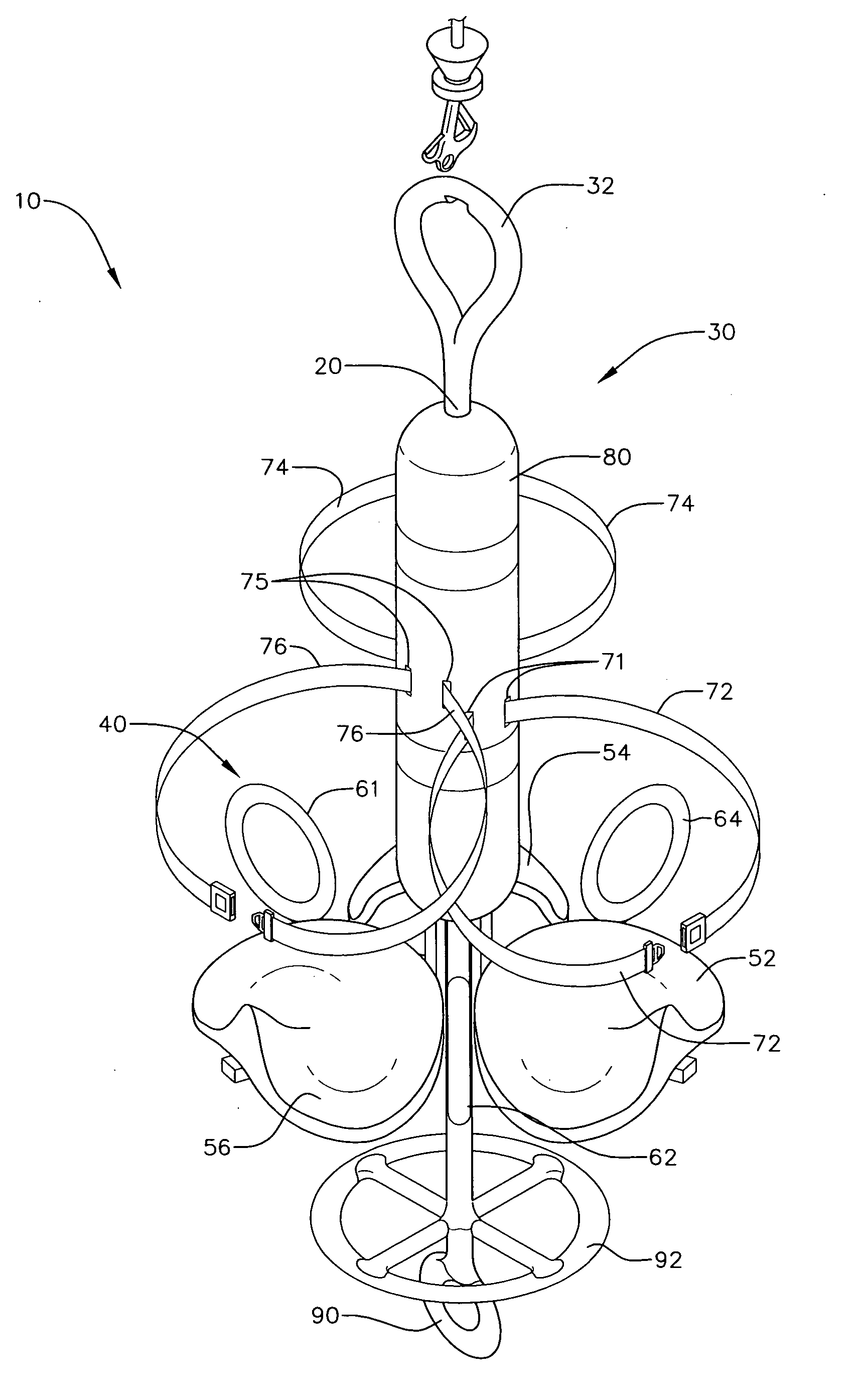Rescue lift
a lift and emergency technology, applied in the field of emergency rescue lifts, can solve the problems of affecting the rescue of victims, and generally becoming immobilized, and achieve the effect of simple connection
- Summary
- Abstract
- Description
- Claims
- Application Information
AI Technical Summary
Benefits of technology
Problems solved by technology
Method used
Image
Examples
Embodiment Construction
[0015]FIG. 1 illustrates a particular embodiment of the rescue lift device 10. The device includes a central spine 20. In one embodiment, the central spine 20 is substantially rigid, and constructed from aircraft grade aluminum. In another embodiment, the central spine 20 is constructed from stainless steel. It will be appreciated by those skilled in the art that in another embodiment, the central spine is constructed of titanium, and that in yet other embodiments, the central spine is constructed of a lightweight, high strength alloy. It will be further appreciated that in another embodiments, the central spine is non-metallic, and that in other embodiments, the central spine is of a substantially rigid material that is resistant to rust.
[0016] In one embodiment, the central spine 20 is of a substantially solid construction. In another embodiment, the central spine is of a substantially hollow construction. In another embodiment, the central spine is of a honeycomb-type constructi...
PUM
 Login to View More
Login to View More Abstract
Description
Claims
Application Information
 Login to View More
Login to View More - R&D
- Intellectual Property
- Life Sciences
- Materials
- Tech Scout
- Unparalleled Data Quality
- Higher Quality Content
- 60% Fewer Hallucinations
Browse by: Latest US Patents, China's latest patents, Technical Efficacy Thesaurus, Application Domain, Technology Topic, Popular Technical Reports.
© 2025 PatSnap. All rights reserved.Legal|Privacy policy|Modern Slavery Act Transparency Statement|Sitemap|About US| Contact US: help@patsnap.com



